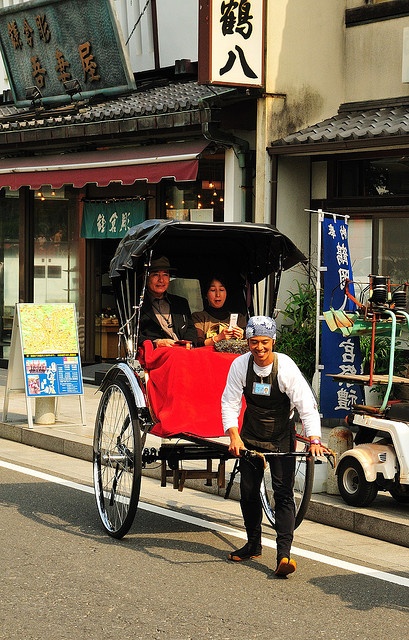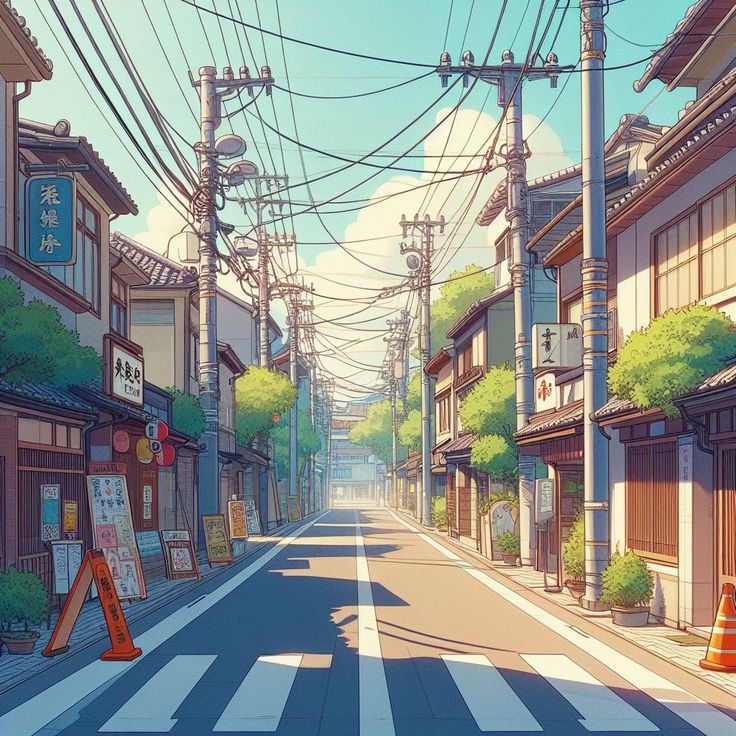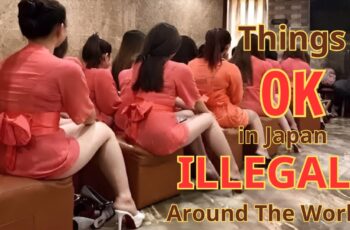Japan is a nation that effortlessly captivates the global imagination. It’s a place where ancient Shinto shrines stand in the shadow of neon-lit skyscrapers, where serene Zen gardens offer a quiet escape from the world’s busiest city, and where a deep reverence for tradition coexists with a relentless drive for futuristic innovation. This land of contrasts is filled with wonders, quirks, and cultural nuances that can take a lifetime to fully understand.
This article will take you on a journey through 20 amazing facts that reveal the unique fabric of Japanese life. From its technological marvels to its culinary obsessions and profound social customs, we’ll peel back the layers of this incredible country.
Then, we will address a more provocative and complex question, one often whispered or searched for online: “Which country do the Japanese hate?” The very nature of this question is problematic, as “hate” is a powerful and deeply personal emotion rarely applicable to an entire nation of 125 million people. However, by rephrasing it to “Which countries does Japan have the most strained and historically complex relationships with?”, we can explore the geopolitical tensions and historical grievances that shape modern Japanese public sentiment and foreign policy.
Let’s begin our journey with the wonders that make Japan so unique.
20 Amazing Facts That Define Japan
1. A Vending Machine for Absolutely Everything
Japan is the undisputed king of vending machines, with approximately one machine for every 30 people. But it’s the sheer variety of goods on offer that is truly astounding. Beyond the expected drinks and snacks, you can purchase hot meals like ramen and fried chicken, fresh eggs, bags of rice, umbrellas, business shirts, flower bouquets, and even live crabs. These machines are a testament to Japan’s love for convenience, automation, and safety—they are almost never vandalized.
2. The Land of 6,852 Islands
While most people think of Japan as the four main islands—Honshu, Hokkaido, Kyushu, and Shikoku—the country is actually a vast archipelago. The Japanese government officially recognizes 6,852 islands. Many of these are uninhabited, but they contribute to Japan’s stunningly long and varied coastline. This geography has profoundly shaped Japanese culture, cuisine (especially its reliance on seafood), and its sense of identity as an island nation.
3. The Shinkansen’s Unbelievable Punctuality
Japan’s Shinkansen, or bullet train, is a global icon of efficiency. It’s not just about its speed, which can exceed 320 km/h (200 mph); it’s about its staggering punctuality. The average annual delay for a Shinkansen is less than a minute. This figure includes delays caused by natural disasters like earthquakes and typhoons. If a train is delayed by more than five minutes, passengers are often offered an official “delay certificate” to show their employer.
4. There Are More Pets Than Children
Japan is facing a significant demographic challenge with a rapidly aging population and a very low birth rate. A striking statistic that illustrates this trend is that the number of registered pets (primarily cats and dogs) has surpassed the number of children under the age of 15. This reflects a shift in social dynamics, where pets often fill a companionship role in smaller, modern families.
5. The Art of Silence on Public Transport

Riding a train in Tokyo during rush hour is an experience in organized, silent chaos. Despite being packed shoulder-to-shoulder, the train cars are often remarkably quiet. It is considered a major breach of etiquette to speak loudly or take phone calls on the train. This public silence is a manifestation of the Japanese concept of wa (和), which emphasizes harmony and consideration for others in a shared space.
6. Over 300 Flavors of Kit Kat
In most countries, Kit Kat is a simple chocolate-covered wafer. In Japan, it’s a cultural phenomenon and a gourmet obsession. There have been over 300 limited-edition and regional flavors, including wasabi, matcha green tea, soy sauce, sweet potato, sake, and even cough drop. The name “Kit Kat” sounds similar to the Japanese phrase kitto katsu (きっと勝つ), which means “you will surely win,” making it a popular good-luck gift for students before exams.
7. Home to the World’s Oldest Continuously Operating Company
Before its liquidation in 2006, the construction company Kongō Gumi was the world’s oldest continuously operating business, founded in the year 578 AD. For over 1,400 years, this family-run enterprise specialized in building Buddhist temples. This incredible longevity speaks to a business culture that values stability, legacy, and mastery of a craft over rapid, short-term growth. The world’s oldest hotel, Nishiyama Onsen Keiunkan, founded in 705 AD, is also in Japan and is still operating today.
8. Square Watermelons Aren’t Just for Show
Yes, Japan grows square watermelons. However, they are not a genetically modified oddity. They are grown in special square glass boxes, forcing the fruit to take on the shape of the container. The original purpose was practical: a square melon is easier to stack and fits more neatly inside a refrigerator. Today, they are primarily luxury novelty items, often costing over $100, and are more decorative than delicious, as they are harvested before they are fully ripe.
9. Toilets That Do More Than Just Flush
The Japanese toilet is a masterpiece of technology and comfort. A standard modern toilet in a home, hotel, or even a public department store often comes with a heated seat, a built-in bidet with adjustable water temperature and pressure, a warm air dryer, and even a “privacy” button that plays a flushing sound or music to mask any noise. For many foreign visitors, it’s one of the most memorable and baffling cultural encounters.
10. The Culture of “Inemuri” (Sleeping on the Job)
In many Western cultures, falling asleep at your desk would get you fired. In Japan, it can be seen as a sign of diligence. The practice of inemuri (居眠り), which translates to “sleeping while present,” is generally tolerated. The logic is that the person is so dedicated to their job that they have worked themselves to the point of exhaustion. There are unwritten rules, however: you must remain upright, and it is more acceptable for senior employees than for new hires.
11. An Astonishingly Low Crime Rate
Japan is one of the safest countries in the world, with an extremely low crime rate. It’s common for people to leave their wallets and phones on a café table to reserve their seat. Lost items are almost always turned in to the police and returned to their owner. This sense of public safety is rooted in strong community bonds, a culture of respect for property, and an effective law enforcement system.
12. The City with the Most Michelin Stars
Paris may be the historic heart of gastronomy, but Tokyo is its modern-day king. For years, Tokyo has held the title for the city with the most Michelin-starred restaurants in the world. This isn’t just about high-end French cuisine; it reflects the incredible depth, quality, and craftsmanship found in Japanese food, from humble ramen shops to exclusive sushi counters.
13. The Bowing Deer of Nara
In the city of Nara, the former capital of Japan, deer are considered sacred messengers of the gods. Over 1,200 of them roam freely through the city’s parks and temples. What’s most astonishing is that many of these deer have learned to bow to visitors in order to ask for the special deer crackers (shika-senbei) sold nearby. It’s a surreal and charming interaction between nature and culture.
14. The Complex Art of Bowing
Bowing (ojigi) in Japan is not just a simple greeting; it is a complex social language. The depth, duration, and frequency of the bow communicate respect, gratitude, apology, and social status. A casual nod of 15 degrees is for equals, a deeper 30-degree bow shows respect, and a 45-degree bow (saikeirei) is reserved for profound apologies or for showing the utmost respect, such as when meeting the Emperor.
15. Capsule Hotels: The Ultimate in Compact Living
First developed to accommodate businessmen who had missed the last train home, capsule hotels offer a cheap and functional place to sleep. Each guest gets a private, enclosed pod roughly the size of a single bed, stacked in rows. While originally utilitarian, many modern capsule hotels are sleek, futuristic, and offer more amenities than a traditional hotel, including spas, lounges, and high-tech entertainment systems.
16. The Misunderstood World of Geishas
Contrary to persistent Western misconceptions, geishas are not prostitutes. They are highly skilled professional entertainers and hostesses. A geisha’s training takes years and includes mastery of traditional Japanese arts, such as playing the shamisen (a three-stringed instrument), performing classical dance, and practicing the art of conversation. They are custodians of Japanese culture, hired to entertain guests at exclusive dinners and events.
17. Sumo Wrestling’s Sacred Rituals
Sumo is more than just a sport in Japan; it is a Shinto ritual. Every aspect of a sumo tournament is steeped in ancient tradition. The ring (dohyō) is considered sacred ground. Before a match, wrestlers clap their hands to attract the attention of the gods, stomp their feet to drive out evil spirits, and throw salt into the ring for purification. The wrestlers themselves live a highly regimented life in communal “stables” where every aspect of their lives, from diet to dress, is dictated by centuries-old customs.
18. A Hotspot of Volcanic Activity
Situated on the Pacific “Ring of Fire,” Japan is one of the most volcanically active countries on Earth. It has over 110 active volcanoes, which are both a source of risk and a blessing. This volcanic activity is responsible for the thousands of onsen (natural hot springs) found throughout the country, which are a central part of Japanese culture for relaxation and health.
19. The Cherry Blossom Forecast is Serious Business
The blooming of the cherry blossoms (sakura) in spring is a national event. The Japan Meteorological Agency releases detailed forecasts, tracking the “blossom front” as it moves from the south to the north of the country. News channels provide daily updates. This obsession culminates in hanami (flower viewing) parties, where friends, families, and coworkers gather under the blossoms to eat, drink, and celebrate the beautiful, fleeting nature of life.
20. Manga and Anime Are More Than Cartoons

{“prompt”: “anime style illustration of summer, Japanese street, no people, studio ghibli style”, “image_url”: “https://th.bing.com/th/id/OIG3.k_cTnIqeRmN3wdt0xNmj?pid=ImgGn”, “creation_date”: “2024-03-15T2109Z”}
Manga (comics) and anime (animation) are not just for children in Japan; they are a respected art form and a massive industry with a diverse audience of all ages. You will see adults reading manga on the train without a second thought. The genres are as varied as any other literary or cinematic medium, ranging from epic fantasy and science fiction to historical dramas, romance, sports stories, and complex philosophical narratives. They are one of Japan’s most powerful cultural exports.
Untangling a Complex Question: Japan’s Most Strained International Relationships
Now we turn to the more difficult part of our discussion. The question “Which country do Japanese hate?” is inherently flawed. National sentiment is not a monolith; it is a complex tapestry woven from threads of history, politics, media narratives, and individual experiences. To paint an entire populace with the brush of “hate” is a gross oversimplification.
However, it is undeniable that Japan has deeply strained and complicated relationships with several of its neighbors. Public opinion polls, such as those conducted by the Pew Research Center or Japanese organizations like Genron NPO, consistently show that Japanese people hold highly unfavorable views of certain countries. These feelings are not born from a vacuum but are rooted in unresolved historical grievances and ongoing political disputes.
Let’s examine the three nations with which Japan has the most significant and persistent friction: China, South Korea, and North Korea.
1. The Relationship with China: A Rivalry of Past and Future
The relationship between Japan and China is perhaps the most complex and consequential in Asia. It is a relationship of deep historical wounds, intense economic codependence, and growing geopolitical rivalry.
-
The Scars of History: The primary source of animosity stems from the Second Sino-Japanese War (1937-1945). Events like the Nanjing Massacre, where the Imperial Japanese Army killed hundreds of thousands of Chinese soldiers and civilians, and the horrific human experiments conducted by Unit 731 have left an indelible scar on the Chinese national psyche. From the Japanese perspective, there is a feeling that while apologies have been made by various Prime Ministers over the years, they are never deemed sufficient by Beijing. There is also a segment of Japanese society, including some prominent politicians, who dispute the scale or details of these historical events, which further inflames tensions. Visits by Japanese leaders to the Yasukuni Shrine, which honors convicted war criminals among others, are seen by China as evidence of Japan’s lack of remorse.
-
Modern Territorial Disputes: The historical issues are compounded by a modern territorial dispute over a group of uninhabited islands in the East China Sea, known as the Senkaku Islands in Japan and the Diaoyu Islands in China. Both nations lay claim to the islands, which are near potentially rich oil and gas reserves. The regular presence of Chinese coast guard vessels in the waters around the islands is a constant source of diplomatic friction and military tension.
-
Economic Interdependence vs. Political Distrust: The great paradox of the Sino-Japanese relationship is their economic entanglement. China is Japan’s largest trading partner. This economic reality forces a degree of cooperation, yet it does not erase the deep-seated political and public distrust. Polls consistently show that a very high percentage of Japanese people (often over 80%) hold an unfavorable view of China, citing its hegemonic ambitions, military buildup, and political system.
For the Japanese public, the feeling towards China is less “hate” and more a potent mix of historical guilt, fear of a rising superpower, and frustration over political posturing.
2. The Relationship with South Korea: A Brotherhood of Bitterness
The relationship between Japan and South Korea is uniquely painful. As two democratic, U.S.-allied, capitalist nations, they should be natural partners. Instead, their relationship is plagued by a cycle of recrimination and dispute rooted in Japan’s colonial rule over Korea from 1910 to 1945.
-
Unresolved Colonial Legacy: The core issues are the “comfort women” (women forced into sexual slavery for the Japanese military) and forced laborers during the colonial era. While Japan argues that these issues were legally settled by the 1965 treaty that normalized relations, South Korean courts and a large portion of the public believe the reparations were insufficient and that Japan has never offered a sincere, lasting apology. The constant reopening of these issues infuriates many in Japan, who feel that no matter what they do, it will never be enough.
-
The Dokdo/Takeshima Dispute: Like the dispute with China, there is a territorial conflict over a small group of islets, known as Dokdo in Korea and Takeshima in Japan. While South Korea effectively controls the islets, Japan’s persistent claim is a source of nationalistic anger in both countries.
-
Cultural Exchange vs. Political Stalemate: Despite the political animosity, there is a vibrant cultural exchange. K-Pop and Korean dramas are wildly popular in Japan, while Japanese anime and cuisine are beloved in South Korea. This creates a strange dichotomy where the people may enjoy each other’s culture, but the governments and media are often locked in a bitter feud. The sentiment in Japan towards South Korea is often one of exhaustion and frustration over what they perceive as an unwillingness to move past history, while for South Koreans, it is a demand for justice and true remorse.
3. The Relationship with North Korea: Fear and Distrust
Japan’s relationship with North Korea is different from its relationships with China and South Korea. It is not defined by rivalry or a shared complex history in the same way, but by immediate threat and a specific, deeply emotional grievance.
-
The Abduction Issue: In the 1970s and 1980s, North Korean agents abducted at least 17 Japanese citizens from coastal areas of Japan. The purpose was to train them as spies or to steal their identities. For decades, North Korea denied these abductions until 2002, when it admitted to 13 and returned five. The fate of the remaining abductees is unknown. This issue is a raw, emotional wound in Japanese society and a primary obstacle to any diplomatic progress.
-
The Missile Threat: North Korea’s ballistic missile program poses a direct and tangible threat to Japan. Missiles have been fired over Japanese territory and have landed in its exclusive economic zone. This constant military provocation fuels a sense of fear and deep distrust that dominates public perception of North Korea.
The feeling towards North Korea is not one of historical animosity in the same vein as with China and Korea, but one of present-day fear, anger over the abductions, and profound distrust of a dangerous and unpredictable regime.
Conclusion: Beyond Hate
So, which country do the Japanese hate? The answer is none, because nations don’t feel emotions. People do, and their feelings are shaped by a complex interplay of history, politics, and personal experience.
The unfavorable views held by many Japanese towards the governments of China and South Korea are born of unresolved historical conflicts and present-day political tensions. The feeling towards North Korea is driven by fear and a sense of profound injustice.
At the same time, beneath the political headlines, millions of individual connections exist. Japanese people travel to China for business, enjoy Korean pop culture, and have friends and family from both nations.

